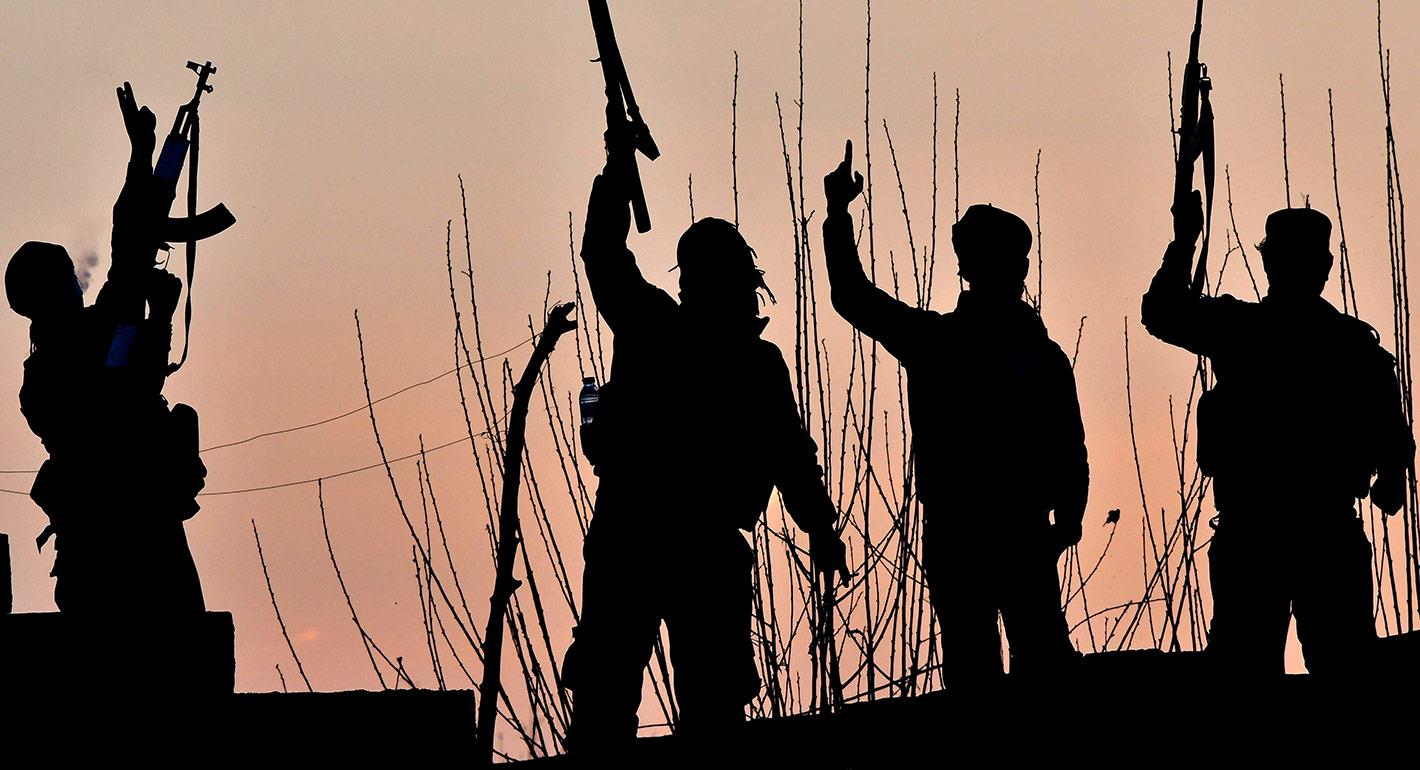On September 15, 2021, Abd al-Rahim Atoun, the Hayat Tahrir al-Sham (HTS): Organization for the Liberation of the Levant general jurist, gave a lecture organized by the HTS sponsored Salvation Government in the city of Idlib, titled "Jihad and Resistance in the Muslim World: The Taliban Model." Atoun, second in command to Abu Mohammad al-Julani, the leader of the group, appeared in the lecture in a modern outfit, abandoning the stereotypical image of the Jihadists, and focused his speech on the similarities between HTS and the Taliban. He focused on the changes adopted by the HTS to localize its Jihadist goals and to communicate with the west.
From Transnational to Local Jihad: A New Image
HTS was formerly known as the Nusra Front, and was formed at the end of 2011, as a branch of the Islamic State in Iraq (ISI). By mid-2013, it broke its ties with ISI and pledged its allegiance to Al-Qaeda, and its leader Ayman Al-Zawahiri. In July 2016, Al-Julani ended its affiliation with Al Qaeda and changed its name to Jabhat Fatah al-Sham (The Front for the Conquest of the Levant). In 2017, Jabhat Fatah al-Sham rebranded yet again when it merged with several other militant groups to establish HTS. These organizational changes were unavoidably accompanied by shifts in the group’s political goals and methods of action. The most important of these was that the group has established itself as a local player fighting in Syria to remove Assad’s regime, completely independent from Al-Qaeda and its global Jihad ideology. The group also focused on establishing its dominance over the Northern areas, specifically the City of Idlib, by weakening and occasionally eliminating its rival groups. By early 2019, it had managed to take control of significant portions of Idlib and of the strategic Bab al-Hawa crossing it shares with Turkey, through which the majority of goods and aids pass.
Pragmatism and Political Messages
Among the most significant pragmatic transformations undertaken by Hayat Tahrir al-Sham was the formation of the Syrian Salvation Government (SSG). The SSG’s purpose was to consolidate its civilian administration over Idlib while substantiating the group’s international and regional commitments. The HTS engaged in various rounds of negotiations with Turkey and, following the Astana Talks, it accepted the establishment of the observation posts that the guarantors of the talks (Russia, Turkey, and Iran) stipulated to keep track of the situation in Idlib.
HTS’ security services widely targeted the remaining Islamic State (IS) groups in Idlib, weakening the Al-Qaeda affiliated Hurras al-Din movement and arresting some of its leaders in the process. The group also attacked smaller Jihadi factions composed primarily of foreign fighters, like Jund al-Sham, and has requested them out of the city. These moves were clear indications that the HTS was yet again renewing its identity and redefining itself; this time as a Syrian group concerned with national liberation, rather than with transnational Jihad. Therefore, according to Atoun, the West, and the United States (US) in particular, should cease to consider it a security threat.
It seems that the Taliban’s model, as a local militant group, that has been recognized by some governments and succeeded in negotiating with the US and eventually took over Afghanistan has boosted morale for HTS who now expect to be accepted as a local group, capable of controlling and eliminating extremist Jihadi movements in Idlib. The shifts in HTS’ vision and orientation can be explained by some factors, most importantly is the pragmatic objectives of its leaders, who may be wishing to capitalize on the Taliban experience. Additionally, by using the stick and carrot policy, Turkey has pressured the group to adopt new policies, especially in the wake of the Astana Talks.
The fact that HTS has chosen to reorient the group to have a local focus, and create a civil government, as well as adhere to the Astana decisions by expelling foreign fighters and preventing transnational Jihadist activity in areas it controls, emphasizes the group’s hope for international recognition that could eventually assist in taking it off from the terrorists’ lists. However, the political messages sent by Al-Julani to the US, and other countries in the west, regarding the HTS’ desire to assume a new role, were ignored.
As HTS continues to control the city of Idlib, the last stronghold of rebels fighting al-Assad’s regime with a population of more than 3.5 million civilians, it presents an international conundrum, particularly if the Russian backed Syrian regime decides to conduct a full-scale offensive on the city. Such an offensive is very likely to result in a humanitarian catastrophe, featuring an unprecedented number of refugees who will probably crowd the Turkish borders, triggering a level of involvement Ankara cannot afford. It may, therefore, be appropriate for regional and international parties involved to arrive at a solution that will avert such a disaster. It might therefore be better to adopt different approaches to prevent such a debacle.
Using the policy of the stick and carrot, the international community should nudge HTS and encourage more constructive behavior in regards to respecting the rights of minorities and supporting the work of civil society organizations in Idlib, in return for the restoration of the humanitarian and stabilization assistance to the city, and establishing direct communication channels with international stakeholders.
Nagwan Soliman is a senior fellow at the Prince Alwaleed Bin Talal Center for Muslim-Christian Understanding at Georgetown University. Follow him on Twitter @NagwanElashwal.






